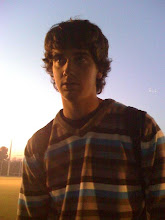
Major attractions
Oviedo, the capital city of Asturias: a clean, picturesque city with a diverse architectural heritage. Santa María del Naranco and San Miguel de Lillo, a pre-Romanesque church and a palace respectively, which were built by the first Asturian kings on Mount Naranco, to the north of the city.
The Picos de Europa National park, and other parts of the Asturian mountain range: The most famous mountain in the park is the Picu Urriellu (2519 m or 8262 ft), also known as El Naranjo de Bulnes, a molar-shaped peak which, reputedly, glows orange in the evening sun, hence its name. Weather permitting, it can be viewed clearly from Camarmeña village, near Poncebos, south of Arenas de Cabrales.
The shrine to the Virgin Mary of Covadonga and the mountain lakes (Los Lagos), near Cangas de Onís: Legend has it that in the 8th century, the Virgin blessed Asturian Christian forces with a well-timed signal to attack Spain's Moorish conquerors, thereby taking the invaders by surprise. The Reconquista and eventual unification of all Spain is therefore said to have started in this very location.
The Asturian coast: especially the beaches in and around the summer resort of Llanes, and the Playa del Silencio near Cudillero fishing village.
Other places of interest
Somiedo Lake
Ceceda village: east of Oviedo along the N634 road. Of particular interest in this exemplary settlement are the traditional horreo grain silos, raised on stilts so as to keep field mice from getting at the grain.
The Dobra River: south of Cangas de Onís, famous for its unusual colour and natural beauty.
The senda costera (coastal way) between Pendueles and Llanes: This partly-paved nature route takes in some of Asturias' most spectacular coastal scenery, such as the noisy bufones (large water spouts created naturally by the erosion of the sea) and the Playa de Ballota.
The unusual rock formation on the beach at Buelna village: east of Llanes. Best viewed at low tide.







